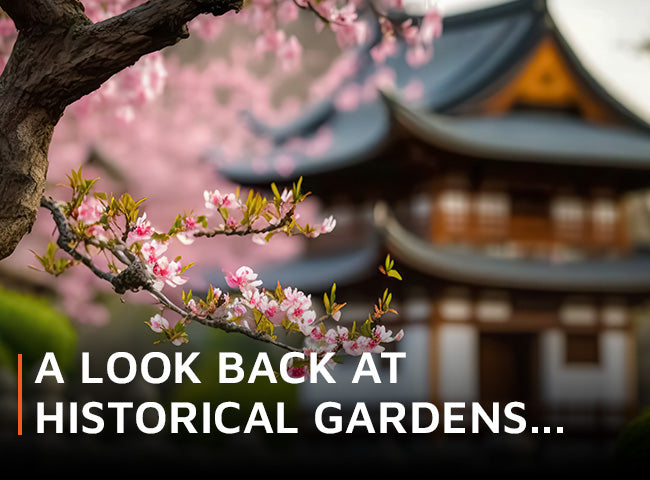
Historical Gardens - Take Inspiration!
Modern gardening is a past time that many of us enjoy. In the past many cultures had some form of gardening but in the past it was a very practical pastime; many homes had some sort of outdoor space to help produce food or medicinal plants. As we look back through the ages we can see how gardens evolved from being a way to produce food items to a fun hobby that many of us enjoy today.
Looking back at gardens in the past can also provide us with inspiration for our modern gardens. Each culture has its own take on gardening; in ancient China, Japan and Egypt gardens were considered sacred and had spiritual meaning. Plants were grown for their religious significance and not just because they were beautiful or tasted nice.
Egyptian Gardens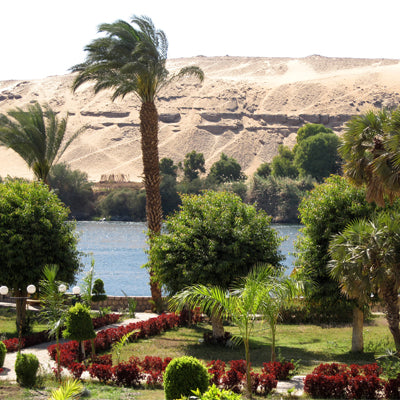
Gardening was a cherished past time for many Egyptians both rich and poor. Most homes in Egypt were purposely placed near water sourced like canals or rivers to ensure the homes could sustain a small garden in searing temperatures. Most home gardens were small and were used for growing vegetables and herbs. Water was essential to ensure food could grow in desert conditions. Gardens weren't just used to grow food; they were also used to grow flowers which could be used in religious festivals and for family celebrations too.
Many of the herbs and flowers grown in Egyptian times were also used medicinally. The most common plants in Egyptian gardens were fruit trees like date palms and fig trees. The Pomegranate Tree was introduced around the time of the ‘New Kingdom’ and was prized by ancient gardeners because it had a beautiful colour and aroma.
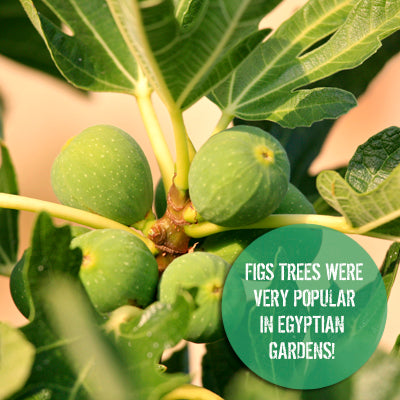
Temple Gardens were regarded as the most important type of garden in Egyptian times. Temples and their gardens were used to show what heaven could be like so they were extravagant and were cared for by highly skills gardeners. Temples were used to grow special vegetables, plants, trees and herbs considered to be sacred. Most were used in rituals and offerings; for example Lettuce was often offered to the god Min.
Temple gardens were often designed to look like an entrance to heaven. Trees often lined avenues leading into the temple and courtyards held small gardens. Temples would have lots of trees which was a sign of wealth. In the hot Egyptian sun trees provided much needed shade.
Medieval Gardens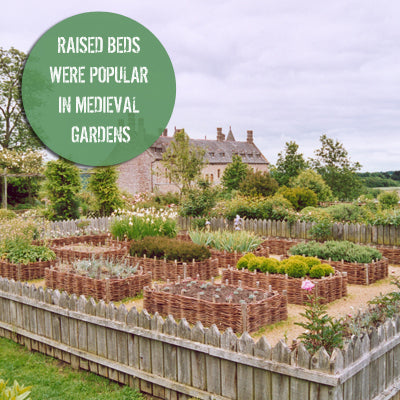
In Medieval times gardening was the main way many people provided food for their households.
In Medieval times Monasteries had the most impressive gardens. The gardens were cared for by the monks and it was seen as a way to show status. Many monasteries grew vegetables, some fruits and medicinal plants. The plants could be used in rituals or to treat some illnesses. Flowers were also grown to be used on church alters. Some grander monasteries in Europe also featured fountains and open green spaces.
Drainage was a major problem for gardeners in the UK; many vegetables would rot because soil was too waterlogged. Raised beds were favoured by many monasteries and smaller cottage gardens. They provided a drier more controllable space to grow. Keeping fish was an important part of medieval gardening; many gardens featured two ponds. A muddy pond to hold fish and a purging pond to clean fish; the muddy fish would be placed in the clean pond for a few days before eating. This would help ensure the fish was clean enough to consume.
Orchards were also popular in medieval times and often were linked to monasteries. Monks would grow apples which could then be sold or made into cider. Some gardens also featured dovecotes; they were used to attract pigeons which could then be used in cooking. Pigeons were also highly prized in medieval times because their feathers could be used to stuff pillows and their dung could also be used to fertilise gardens.
Chinese and Japanese Gardens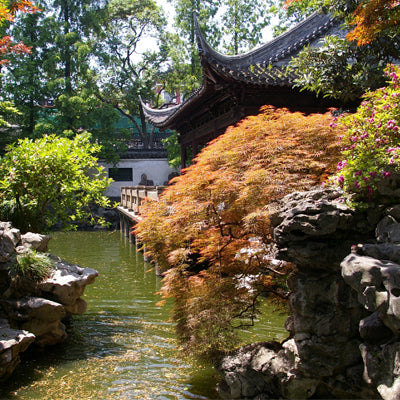
Chinese and Japanese style gardens are popular around the world. Many people often confuse the styles of both gardens. Chinese gardens are intended to be viewed from within the garden while Japanese gardens are designed to be view from inside a home. This means Chinese and Japanese style gardens are hugely popular around the world but many people often confuse their differing styles. Chinese gardens are designed to be view from inside the garden walls; this means the design often features more subtle design highlights and plants. A Japanese garden is designed to be view from inside the home; they often feature large water features, sand and rock style highlights.
Chinese Gardens
Around the world gardeners take inspiration from Chinese and Japanese gardens. They have a simplistic, modern style which many of us like to show in our own gardens. There are many differences between a Japanese and Chinese garden; they make look similar but subtle differences make each stand out for different reasons.
Chinese gardens have been around for thousands of years yet the basic principles have stayed the same. A Chinese garden is intended to be enjoyed from the outside. This means all design and layout elements should be enjoyable while actually in the garden. Water features are used frequently in China; they distract from the busy outside world and are used to create a relaxing atmosphere.
Historical Chinese gardens were designed to represent cosmic diagrams and civilisation. Many ancient gardens were cluttered and plants were left to grow naturally with very little manicuring. Plants were also placed in gardens to represent different meanings. Peony flowers were regarded as very noble so was often placed around a home. Lotus flowers were used and signified ‘purity growing from mud’.
Japanese Gardens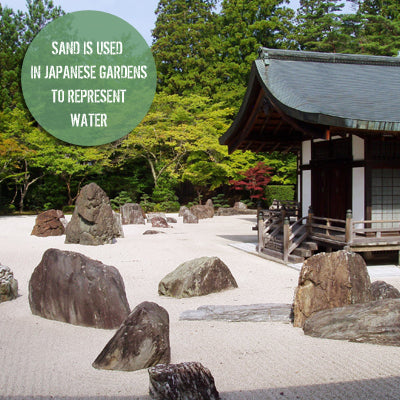
The idea of gardening was first brought back to Japan after merchants returned from China. They saw lots of gardens in China and became so inspired they brought ideas from a Chinese garden to Japan. In modern Japan the garden is still considered art and is an important part of cultural expression.
Rock, sand and gravel are an important element in Japanese gardens. Each represents something different when placed in a garden. For example many gardens in Japan feature a vertical rock wall; this represents Mount Horai which is the legendary home of ‘The Eight Immortals’. A flat rock placed on the ground can represent earth while sand is used to represent a flowing river. Rocks and water are also used to symbolise Yin and Yang; the idea of balance in Buddhist philosophy.
Everything in a Japanese garden has a meaning or is chosen for aesthetic principles. Trees are carefully chosen and are often arranged so in autumn they still look attractive. Moss is often used to help make more modern gardens feel older and more ancient. Many flowers and plants are placed in a garden because of their religious symbolism. For example the lotus flower is regarded as sacred in Buddhist teachings.
Edwardian Gardens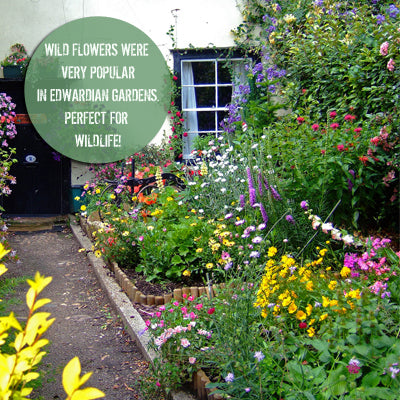
This period is often referred to as the golden age for gardening in the UK. During the Edwardian period more people had more money to spend; this meant the wealthy owners of large country gardens started to invest in landscaping and new ideas.
During the Edwardian period there were two main styles of gardening; wild and formal. The idea of a country garden was popular at the time; gardeners wanted to see plants grow in their natural ‘wild’ form. The other school of thought was that a garden should be formal and exact. This contrast in style is still apparent in modern country home gardens.
Roses were a very important part of Edwardian gardens; often sections of a garden wee devoted to roses. The flower was admired for its beauty and often more than once species would be grown at one time. This provided the home owner with more choice and also made the garden more fulfilling for the senses.
Architecture was very important in the Edwardian era therefore gardens often features some sort of structure like pergola or arbour. Climbing plants were very important; honeysuckle and jasmine were commonly used for their sweet fragrance. Lilies were also popular during the Edwardian period and many varieties were grown in gardens.
Take a look at our Pinterest page, we have set up a new board with images of historical gardens, come take a look for lots of inspiration.



